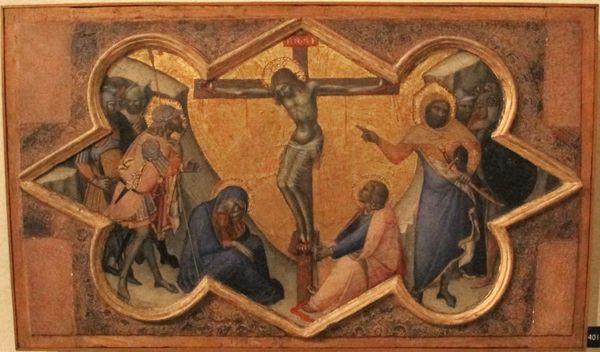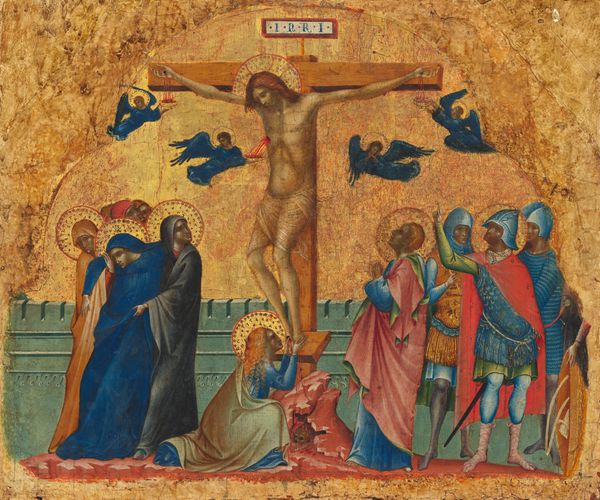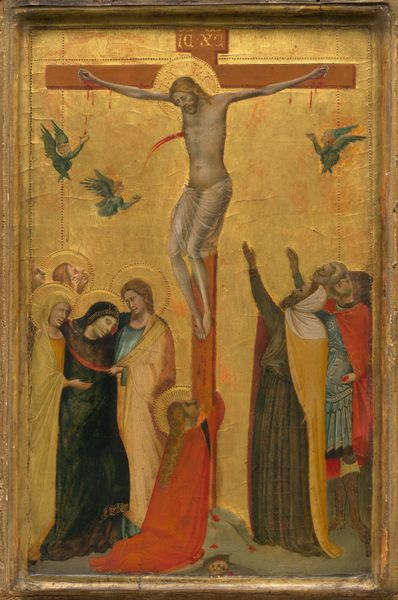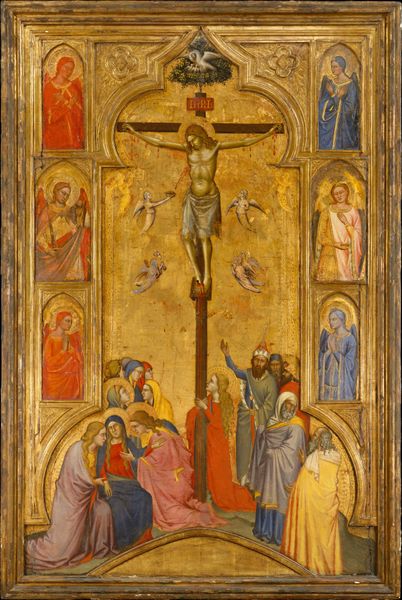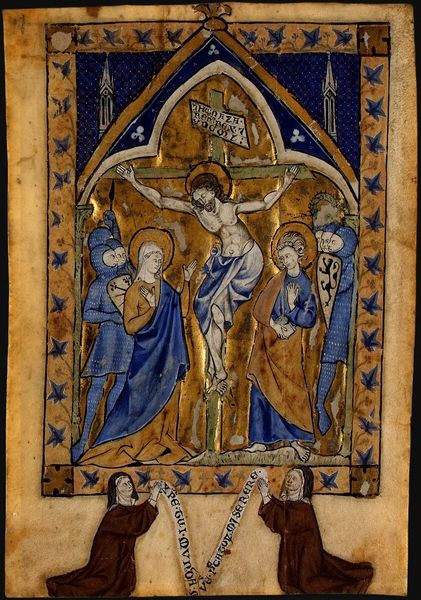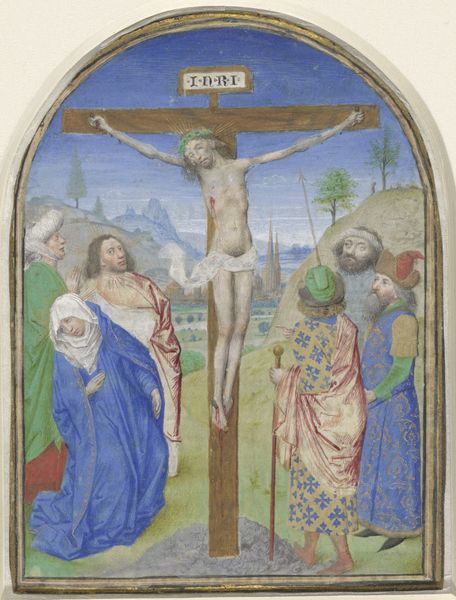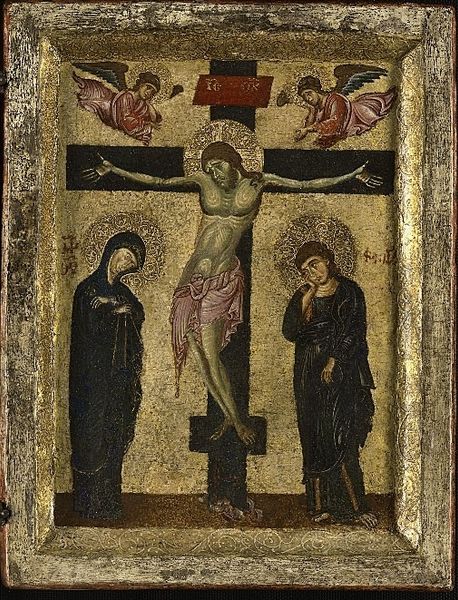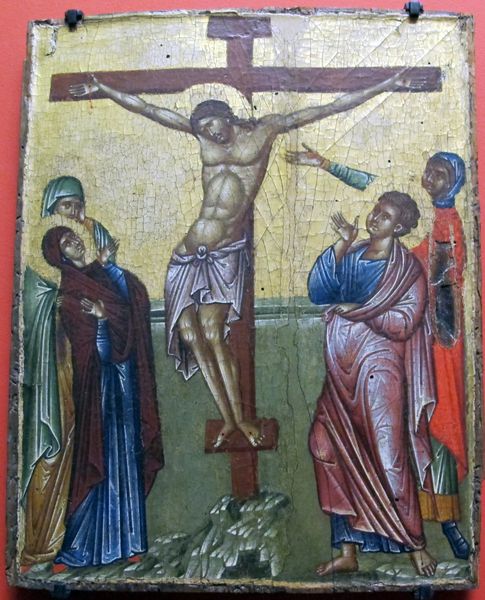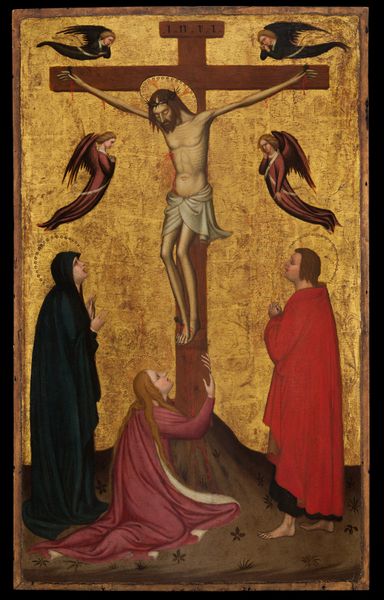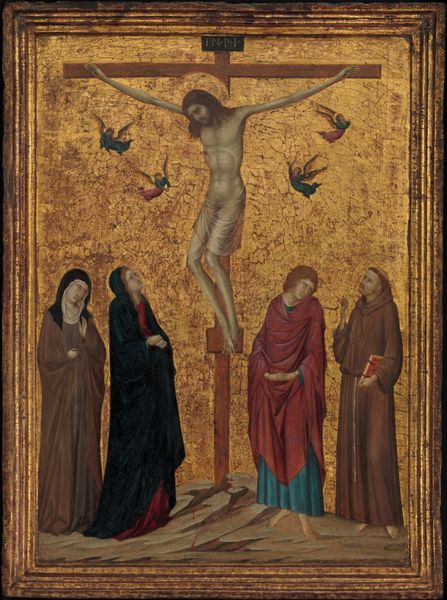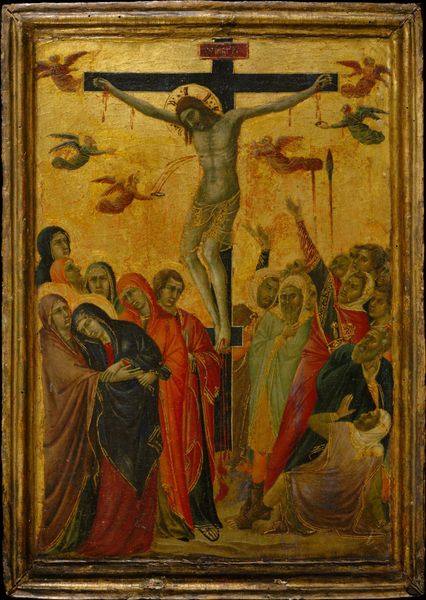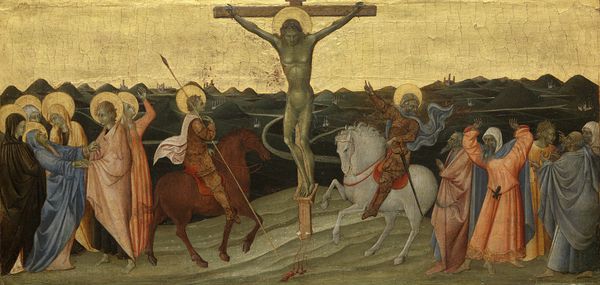
tempera, painting, fresco
#
narrative-art
#
tempera
#
painting
#
sienese-school
#
figuration
#
fresco
#
oil painting
#
history-painting
#
italian-renaissance
Dimensions: Panel: 37.6 × 72.4 cm (14 3/4 × 28 1/2 in.); Painted Surface: 33 × 68 cm (13 × 26 3/4 in.)
Copyright: Public Domain
Editor: Here we have Taddeo di Bartolo's "The Crucifixion," created between 1401 and 1404. It's a tempera and fresco painting now at the Art Institute of Chicago. I'm struck by how the gold background contrasts with the somber figures around the cross. What do you see in this piece beyond its religious narrative? Curator: I'm immediately drawn to the materiality itself. Think about the labor involved in creating the pigments, the gold leaf application. The value of gold wasn’t just aesthetic; it was a very real display of wealth and power of the patron and church at this moment in Siena. Look closer – can you see the details in the application of the tempera, likely egg-based, a readily available material? How does its application, layer upon layer, contribute to the overall impact? Editor: That's fascinating! I never really thought about the egg tempera as a comment on resources. So, the very materials themselves tell a story of what was available and valued. But how does that shift our understanding of the Italian Renaissance beyond idealized beauty? Curator: Precisely. It’s a shift from divine inspiration to tangible construction. Considering the use of fresco too, it was tied to a specific location, becoming part of the building’s structure. The consumption of labor, materials, all directed towards reinforcing not just faith but the economic and social order as well. Is "Crucifixion" only a representation of faith? Or, in fact, an expression of material excess? Editor: That's a completely different perspective! I was initially focused on the spiritual aspects of the piece. Curator: We are looking at art as both sacred image and evidence of earthly production. Editor: Thank you. I never considered approaching it this way. Seeing the artist’s labor and the materiality in context of society provides such an enlightening lens. Curator: Yes, it reveals the intricate connections between artistic creation and the wider material conditions of its time.
Comments
No comments
Be the first to comment and join the conversation on the ultimate creative platform.
